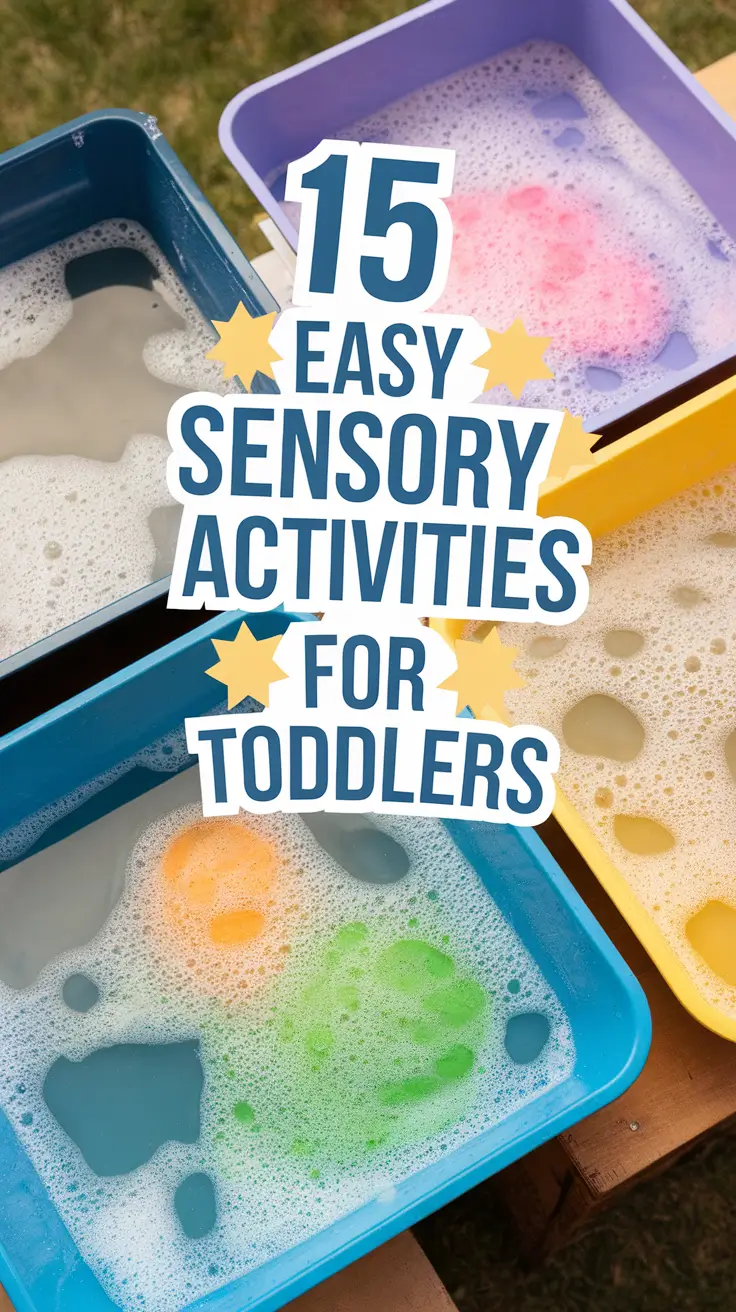Ever wondered what happens when you let your little tornado of energy make a magnificent mess? Trust me, it’s not just about the gleeful chaos they create! When toddlers dive hands-first into sticky, squishy, or grainy substances, they’re actually building crucial hand-eye coordination and developing those all-important motor skills that’ll serve them for life.
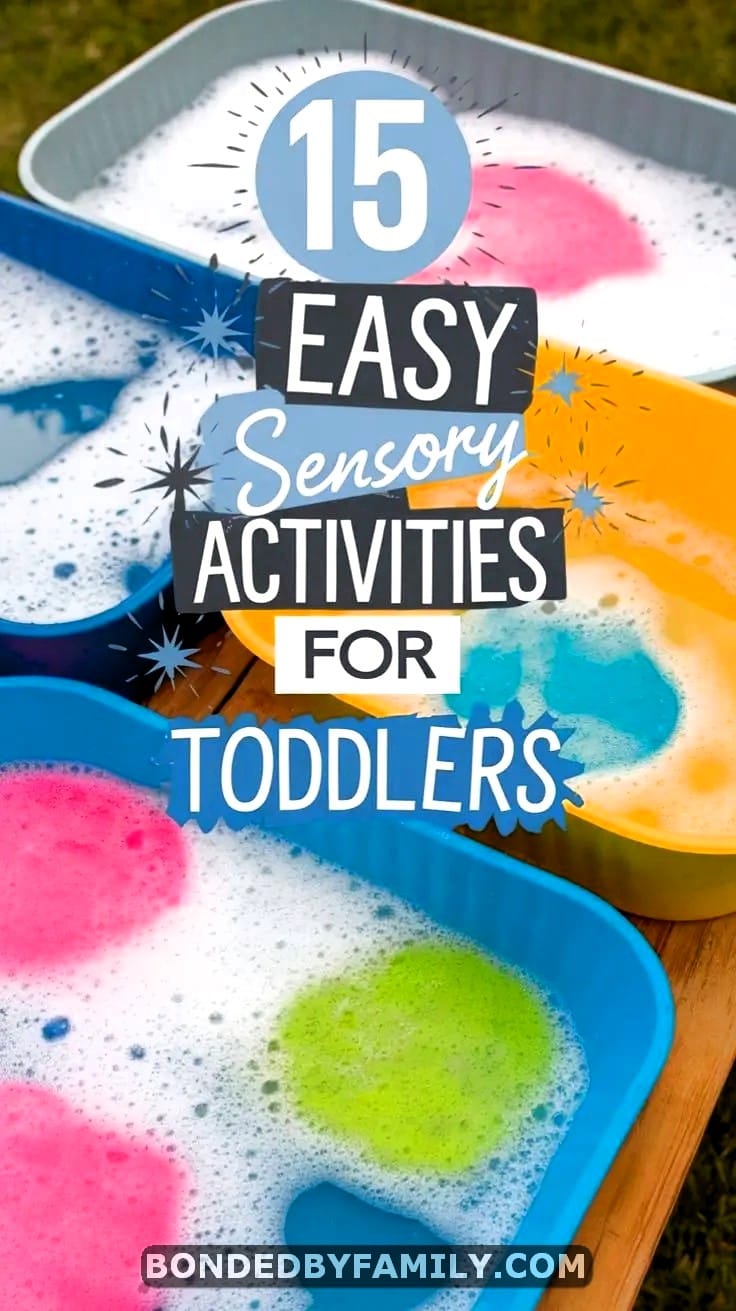
Your pint-sized explorers absolutely thrive when given the chance to investigate tactile treasures. Anything that pops with vibrant hues, feels peculiar to the touch, or produces captivating sounds will undoubtedly capture their boundless curiosity and keep those tiny hands engaged for surprisingly long stretches.
The beauty of these sensory play ventures? They’re astonishingly simple to whip up, won’t drain your wallet, and utilize everyday odds and ends you’ve probably got lurking in your kitchen drawers or craft cupboards right now. While every activity described here is completely kiddo-safe, keeping your watchful eye on the proceedings is always the smart play.
1. Colourful spaghetti
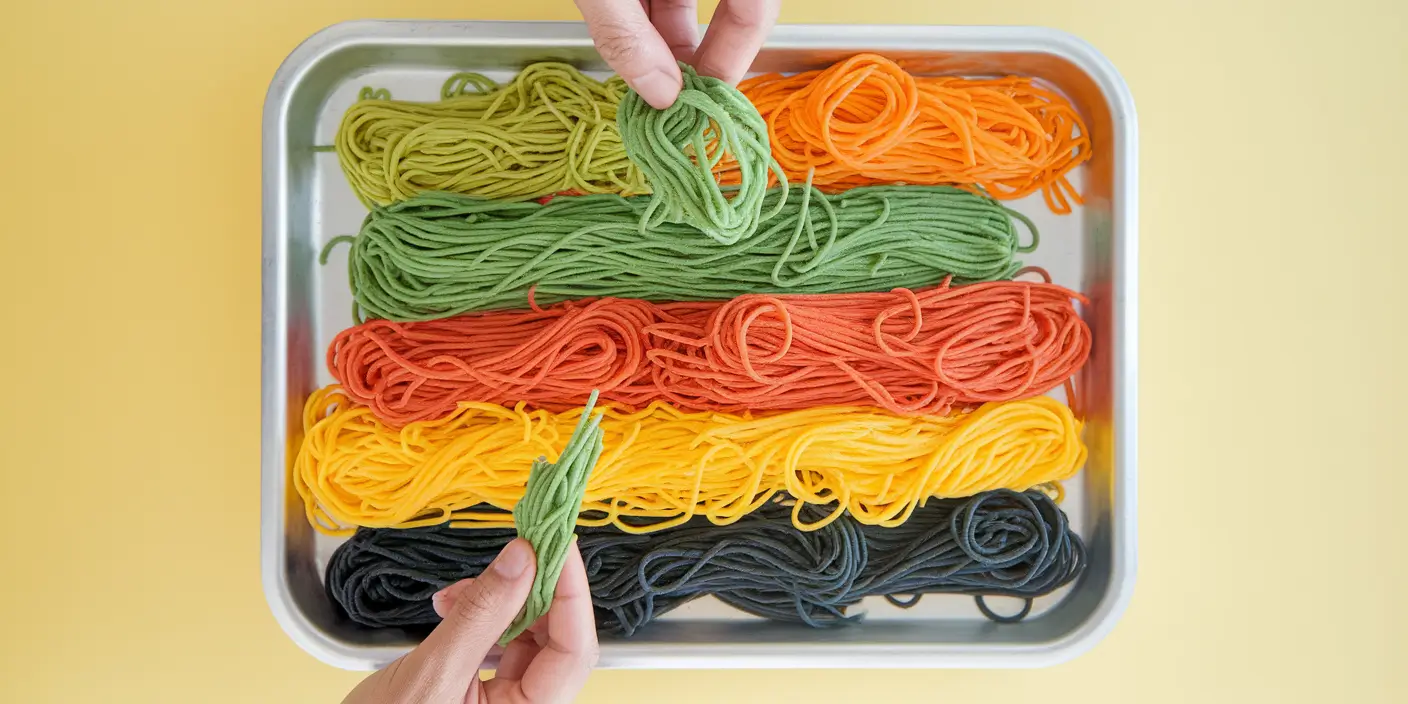
Fancy creating a squirming rainbow your toddler won’t be able to resist? Boil up a hefty batch of spaghetti until it reaches that perfect al dente texture. Once drained, divvy it up between several bowls and introduce different food colorings to each collection of pasta strands. Give them a thorough toss, and voilà – you’ve conjured up a writhing mass of technicolor “worms” that will have your little one squealing with delight as they squish, pull, and twist these slippery, vibrant tendrils.
2. Blowing bubbles
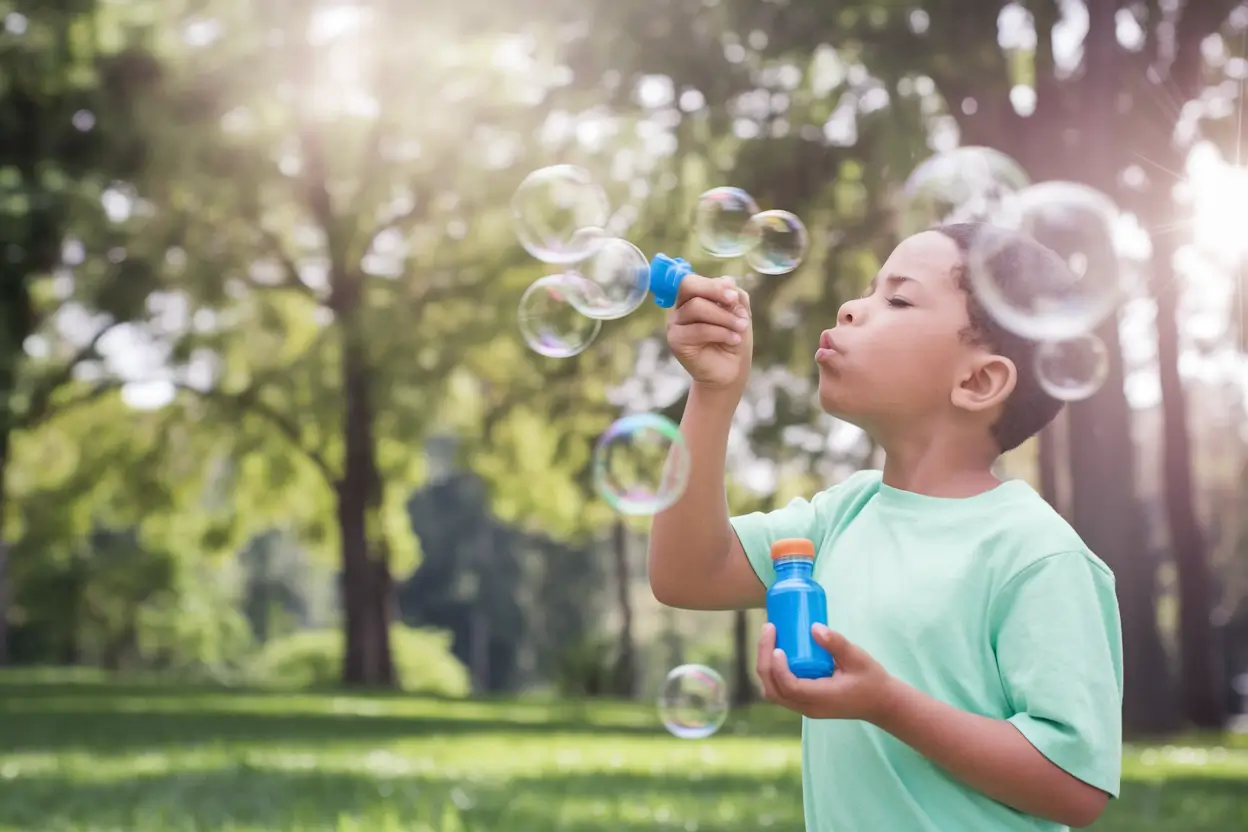
Why shell out cash for store-bought bubble solution when you can craft your own magical potion? Simply combine one part of your everyday dish soap with six parts water, and you’ve mixed up homemade bubble brew that works like a charm! Don’t fret if commercial wands aren’t within reach – hunting for makeshift alternatives becomes half the adventure! Challenge your curious kiddo to discover bubble-making potential in everyday objects. Can they conjure floating orbs using a cookie cutter? What happens when they blow through a bent paperclip or the holes of a colander? The unexpected discoveries spark conversations about shapes, air, and the wondrous science of surface tension.
3. Pom-pom sorting
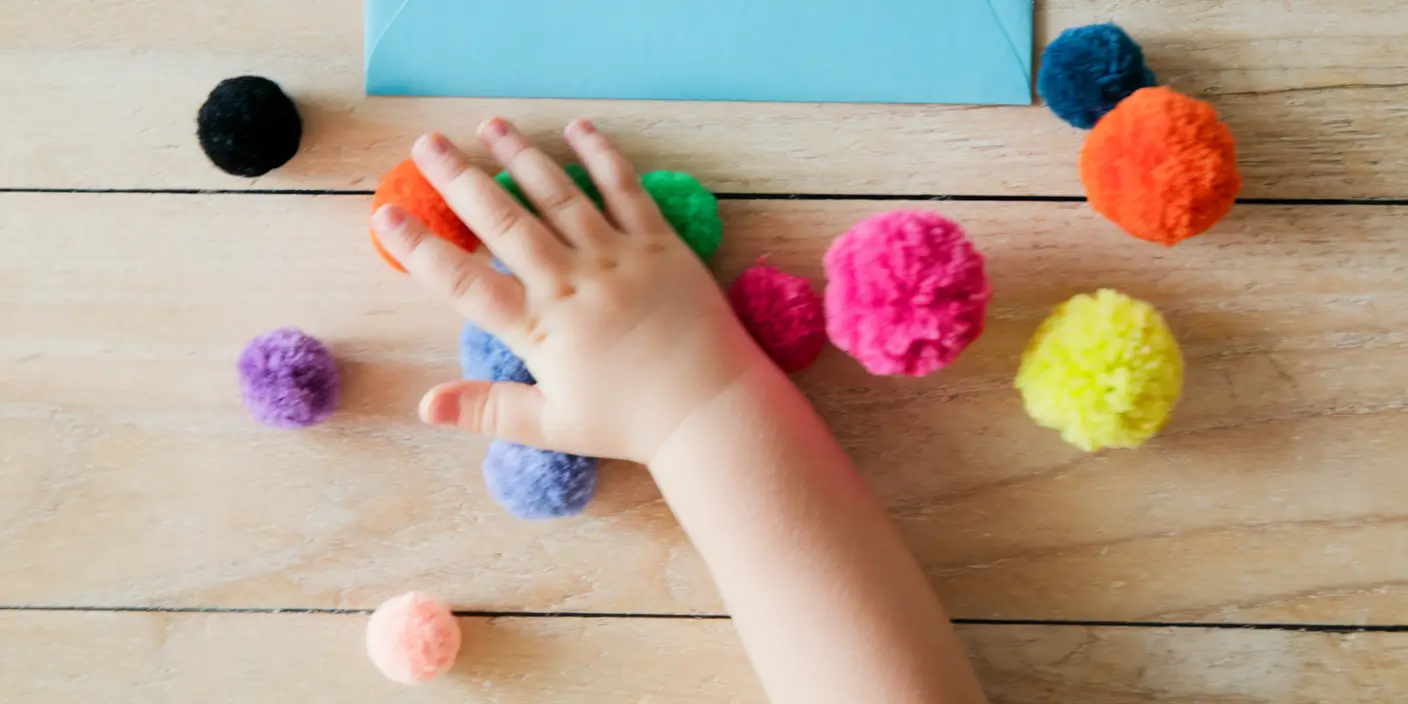
Create a delightfully straightforward matching challenge that introduces your wee one to the vibrant world of colors. Snag a package of readymade fluffy pom-poms from any craft store, or rope in an older sibling to fashion homemade versions using leftover yarn. Then grab a large sheet of paper and draw circles in matching shades to your pom-pom collection. Now comes the educational fun – guide your toddler in grouping these soft, fuzzy spheres into their corresponding color zones. This simple activity secretly builds critical thinking skills while strengthening those tiny finger muscles through the precise picking up and placing of these lightweight treasures.
4. Ice block treasure hunt
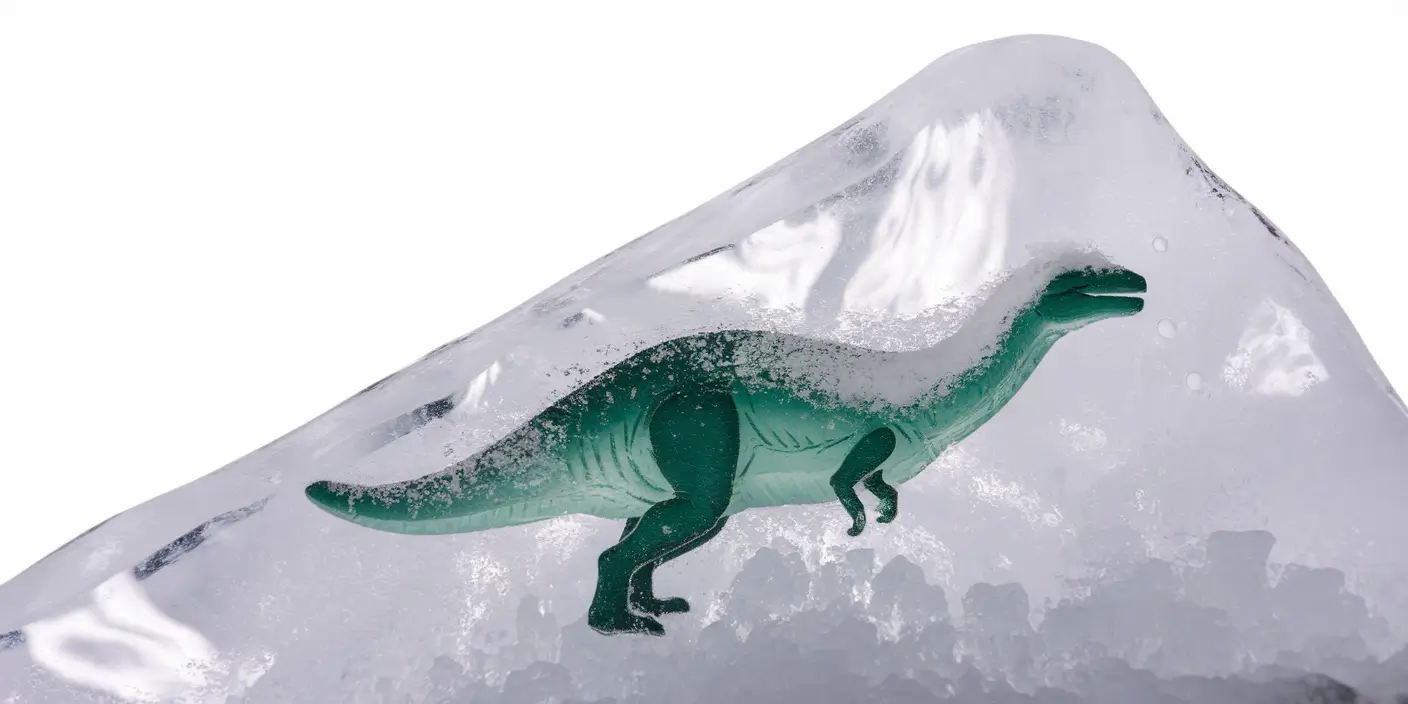
Transform ordinary toys into extraordinary archaeological discoveries with this brilliantly simple frozen adventure! Begin by positioning miniature figurines (dinosaurs work wonderfully) at the bottom of a container, then add just enough water to partially cover them. Pop it in the freezer until solid, then repeat the layering process until you’ve created a substantial block of ice with entombed treasures. Hand over some child-friendly implements – plastic spoons, toy hammers, or dull butter knives work splendidly – and stand back as your little paleontologist chisels away at the frozen mass. The concentrated effort required builds patience while the gradual revelation of hidden prizes creates natural moments of celebration!
5. Play with slime
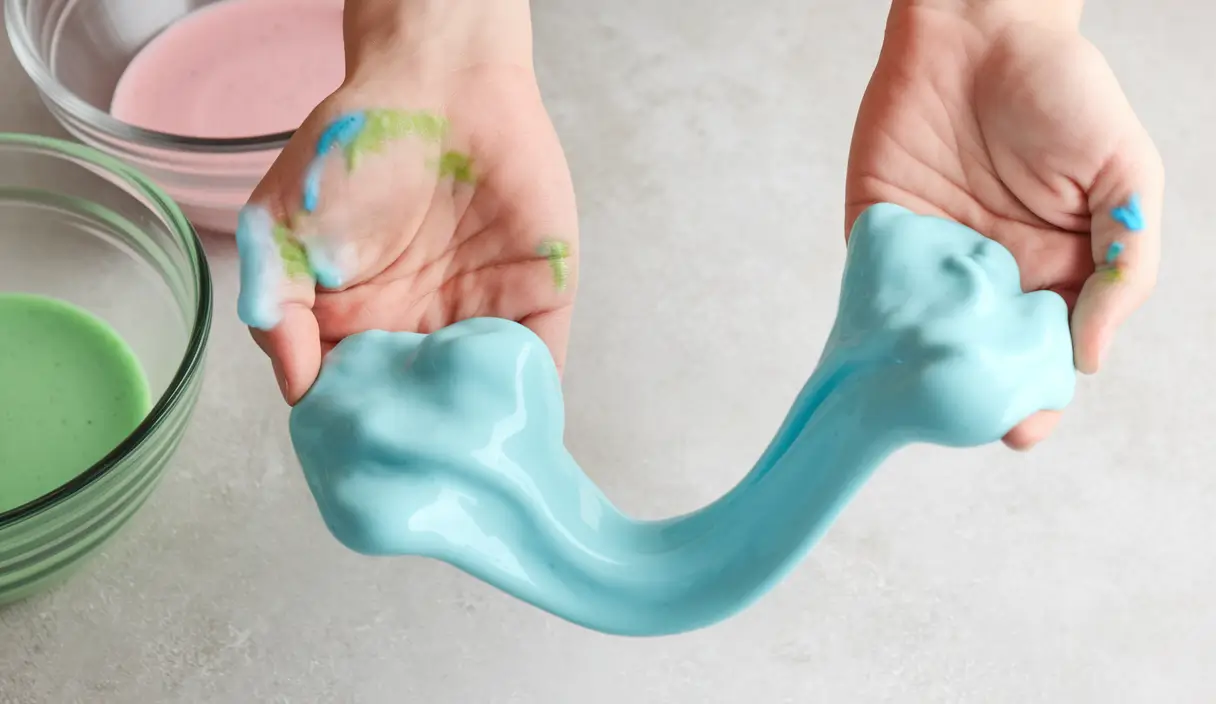
Our ingeniously simple recipe for edible slime creates the perfect sensory playground for curious toddlers. This concoction is safe enough for those inevitable taste tests (though we wouldn’t recommend treating it as a snack)! Just blend cornflour, a sprinkle of icing sugar, and a splash of coconut milk, then jazz it up with your choice of food coloring. The fascinating non-Newtonian result transforms between solid and liquid states depending on how your little one interacts with it – firm when squeezed but flowing like liquid when released. This mind-boggling material provides endless fascination while secretly teaching early physics concepts through hands-on exploration.
6. Make a mud kitchen
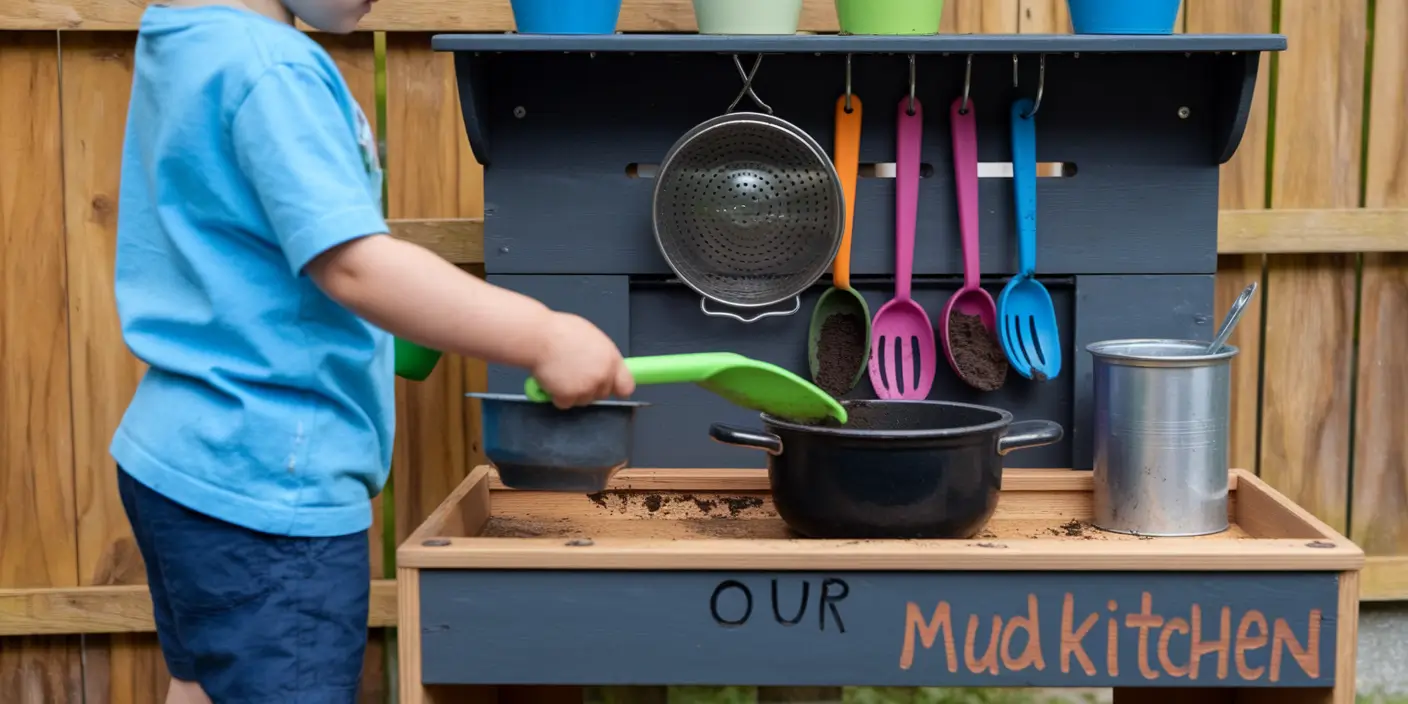
Once your little one has mastered standing on those wobbly legs, unleash their inner chef with an outdoor culinary adventure! Transform a neglected corner of your garden into a pint-sized restaurant where dirt becomes the primary ingredient. Gather cast-off kitchen implements—those mismatched plastic bowls, wooden spoons with chipped handles, and retired measuring cups—and watch as your toddler concocts extraordinary “dishes” from ordinary backyard materials. They’ll squish mud between their fingers, sprinkle grass “seasonings,” and garnish with pebble “salt,” all while developing tactile discrimination, building vocabulary, and strengthening those crucial hand muscles that will eventually hold pencils and button shirts.
7. Rainbow rice
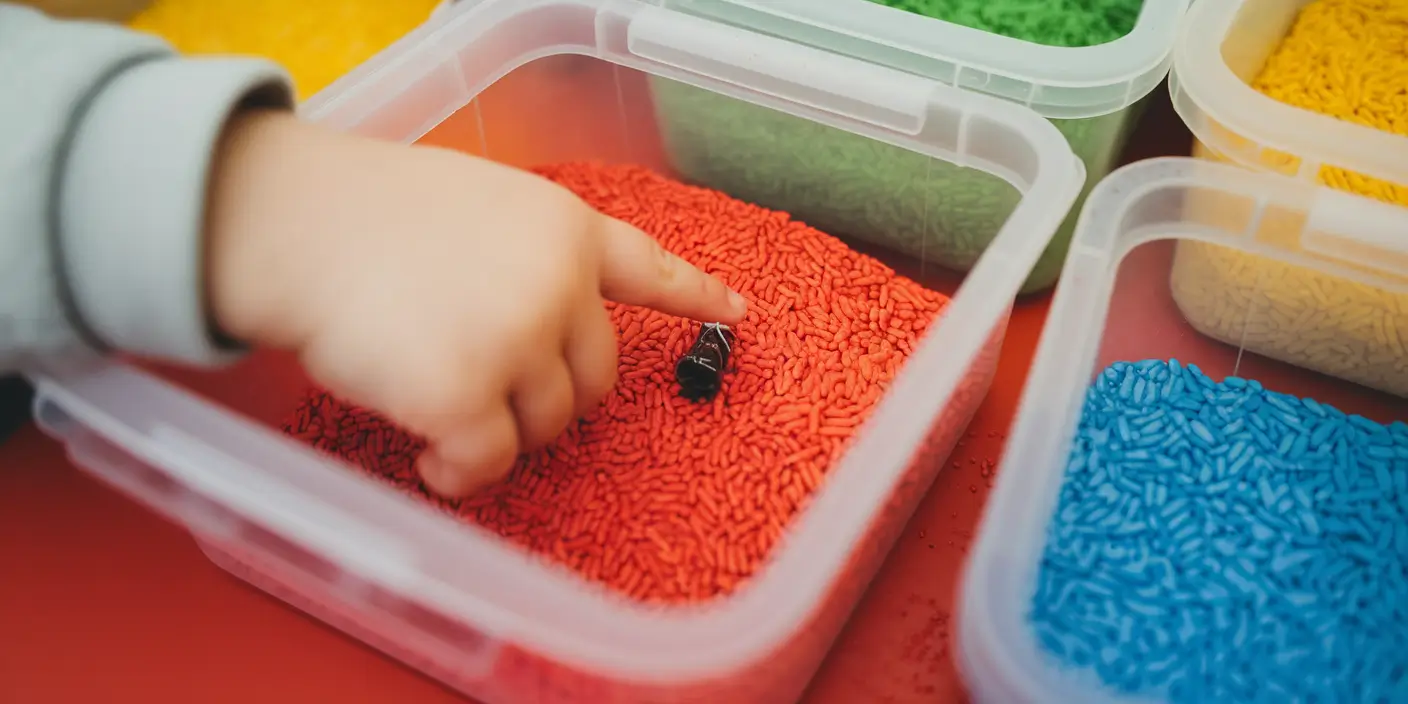
Whip up a sensational sensory bin filler that’ll have your curious toddler absolutely mesmerized! Grab roughly a cup (about 185g) of any ordinary uncooked rice you’ve got hanging out in your pantry. Toss it into a container with a splash of vibrant gel food coloring—the bolder the hue, the better for captivating those developing eyes! Here’s the clever bit: add half a teaspoon of plain vinegar to the mix. This kitchen magician prevents the coloring from transferring to those tiny fingers and potentially staining your furniture. Seal that container tight and let your little one go wild shaking it up—they’ll squeal watching the transformation happen before their eyes! Spread the colored grains across a baking sheet in a thin layer and allow 2-3 hours of drying time. The result? A gloriously tactile play material that creates fascinating sounds when poured, scooped, or filtered through tiny fingers. Mix up several batches in different colors, and you’ll have a miniature rainbow sensory paradise that stimulates multiple senses simultaneously!
8. Homemade playdough
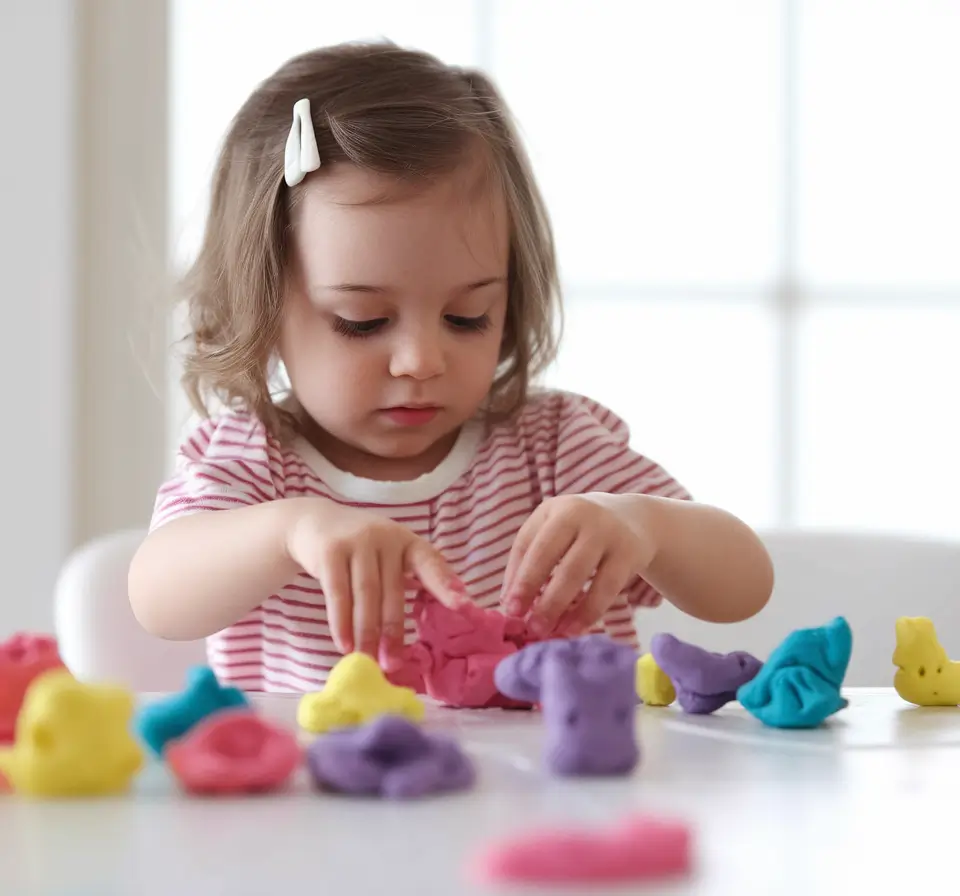
Why spend your hard-earned cash on commercial modeling compounds when superior stuff lurks within your kitchen cupboards? Our foolproof playdough recipe transforms pantry staples into a marvelously malleable medium that maintains its perfect consistency through multiple play sessions. Once you’ve whipped up a batch (or three) in your little one’s favorite shades, elevate the experience by introducing an assortment of imaginative tools. Plastic cookie cutters become shape-makers, silicone ice trays transform into mold factories, miniature rolling pins flatten perfect “pie crusts,” and travel cups create perfect cylinders. This versatile substance invites endless creativity while secretly strengthening those crucial hand muscles your toddler will eventually use for writing. The repetitive squeezing, rolling, and flattening develops fine motor control, while vocabulary blooms as you narrate their artistic process: “Look how you’re flattening that dough! Now you’re making tiny balls!”
9. Make some maracas
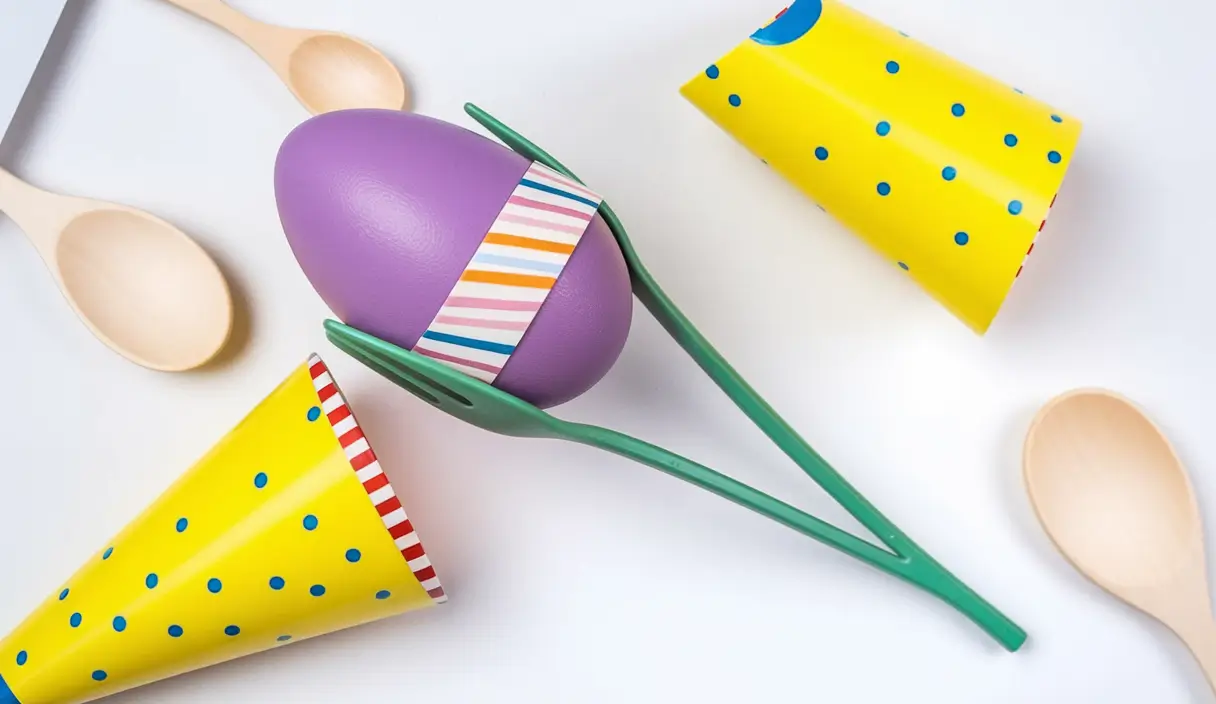
If your nerves can handle a temporary uptick in household decibels, crafting homemade percussion instruments opens up a whole new sensory frontier! These DIY noise-makers introduce your little one to the fascinating world of cause and effect—shake this object and hear THAT sound emerge! You’ve got options for construction: either sandwich dried beans between two plastic spoons and a recycled plastic egg, securing with tape, or fashion triangular shakers from cardboard tubes with sealed ends. The real magic happens when your toddler discovers they possess the power to control sound production—shake vigorously for loud rhythms or gently for softer tones. This musical exploration activates entirely different neural pathways than visual or tactile activities while building coordination through the rhythmic movements required for successful sound-making. Plus, impromptu dance parties with homemade instruments create joyful bonding moments that developmental experts consider pure gold for emotional well-being!
10. Fake snow
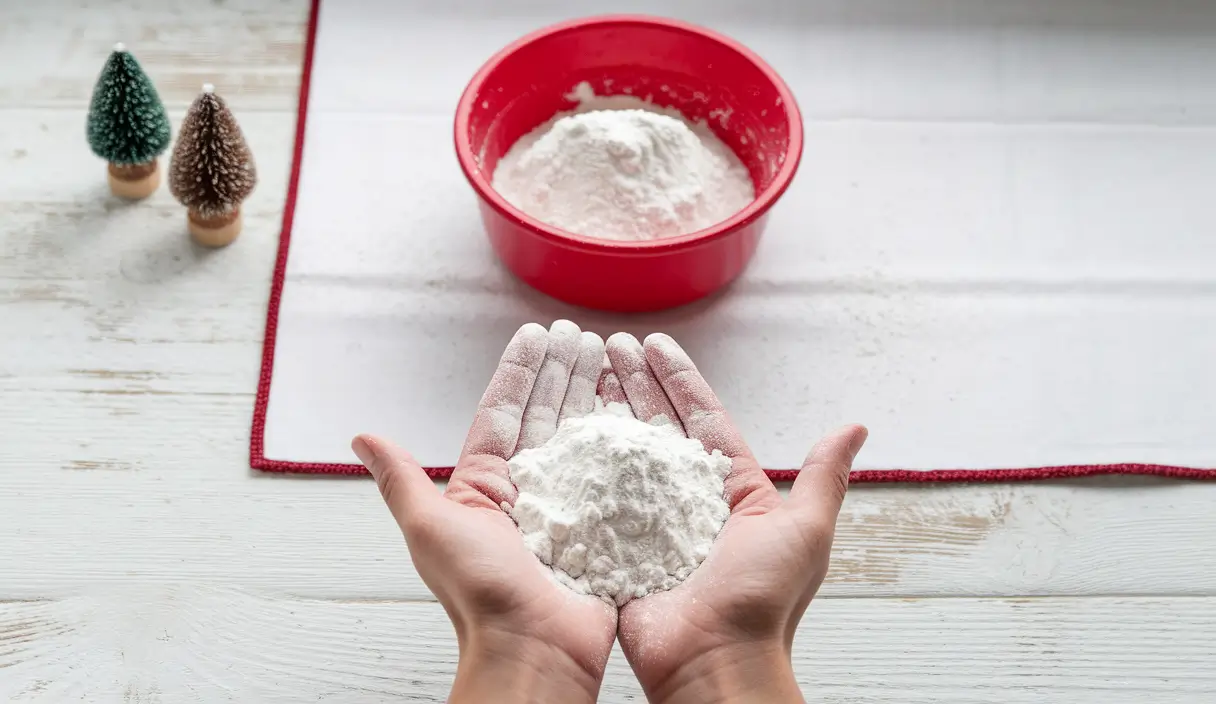
Forget waiting for winter’s whims to enjoy frosty fun with your little one! Our ingenious artificial snow recipe requires just three household ingredients yet creates a stunningly realistic sensory experience. The moment your toddler plunges their hands into this cool, moldable substance, their face will light up with wonder at its uncanny resemblance to the real thing. They’ll delight in compressing it into snowballs, crafting miniature snowmen, or simply running their fingers through its unique texture. For a summery twist that maintains the scientific magic while adding visual excitement, introduce a few drops of food coloring before adding water—just remember this critical sequence to maintain the perfect consistency! This deceptively simple activity secretly introduces early chemistry concepts as your child observes how combining specific ingredients transforms them into something entirely new, while the molding process strengthens those crucial finger muscles needed for future writing skills.
11. Flour sensory trays
Talk about bang for your buck! This gloriously simple activity requires nothing fancier than that forgotten bag of all-purpose flour hanging out in your pantry. Just scoop a generous amount onto any flat surface—a cookie sheet, shallow baking pan, or even a sturdy paper plate works brilliantly—and stand back as your little one discovers the delightful world of powdery expression! Those tiny index fingers will soon be tracing swirls, zigzags, and proto-letters through the silky substance, leaving temporary marks that can be smoothed away with a gentle shake for endless fresh starts.
The tactile sensation of flour against skin creates a uniquely satisfying experience that differs dramatically from traditional art supplies, while the impermanence of their creations removes performance pressure entirely. For an expanded adventure, introduce toy vehicles to create fascinating track patterns, or offer measuring spoons that transform this sensory tray into a pretend bakery. The soft resistance as toys push through flour teaches cause-and-effect relationships, while the visual feedback of creating marks develops pre-writing skills in a pressure-free environment.
12. Six smelly activities
When was the last time you deliberately engaged your toddler’s often-neglected sense of smell? While we instinctively provide visual and tactile stimulation, the olfactory system offers incredible potential for sensory development and memory formation! Transform ordinary household items into fascinating scent explorations with these quick-setup activities that require zero special equipment.
Try “smell and go seek” by dabbing distinctive scents on hidden objects, then challenge your little detective to locate them using only their nose. Or concoct a child-safe (and temporary) “stink bomb” using vinegar and baking soda for a fizzy, smelly science experiment that demonstrates chemical reactions while stimulating those developing nasal passages. These unique activities form powerful neural connections, as smell remains our sense most strongly linked to memory formation and emotional response. Plus, expanding your toddler’s scent vocabulary now builds language skills that will serve them throughout life!
13. Flour & water dough
Once your tiny explorer has thoroughly investigated dry flour, revolutionize their experience by adding the simplest ingredient imaginable—water! This seemingly basic combination transforms into an endlessly fascinating sensory material that changes properties before their very eyes. Provide a small cup of water and a spoon for independent pouring, then watch as your little scientist discovers how liquid transforms powder into an entirely new substance with dramatically different properties.
The wonderful unpredictability of this activity—sometimes creating stiff dough, sometimes slippery goop—introduces early chemistry concepts through hands-on discovery. Your toddler witnesses firsthand how matter changes states, how proportions matter in mixtures, and how the same ingredients can yield wildly different results depending on their ratios. The sensory contrasts between dry flour, partially mixed combinations, and fully incorporated dough create a rich tapestry of tactile experiences all within a single activity. Plus, the inevitable cleanup becomes its own sensory adventure as dried dough flakes away from hands and surfaces!
14. Popcorn senses
Transform an ordinary snack preparation into an extraordinary five-sense extravaganza that’ll have your toddler absolutely captivated! This brilliant activity sequence turns popcorn—that humble pantry staple—into a comprehensive sensory journey that stimulates every pathway to the brain.
Begin by examining unpopped kernels together, noting their hard texture, subtle color variations, and diminutive size. Then comes the auditory magic as those kernels explode into fluffy morsels—counting the pops becomes a natural mathematics lesson! The unmistakable aroma wafting from your kitchen triggers olfactory development, while visually tracking the dramatic transformation from compact seed to expanded snack builds scientific observation skills. Finally, the adventure culminates in the ultimate sensory reward—tasting the fruits of their patient observation! This cohesive experience demonstrates how everyday kitchen tasks can become powerful learning opportunities when approached with intentionality and narration.
15. Sand table
Why limit sandy fun to occasional beach trips when you can bring that irresistible sensory material right into your living space? Create an indoor desert adventure by filling any shallow container—a large baking dish or plastic storage bin works wonderfully—with colorful craft sand. Those developing fingers will discover endless fascination running through the grainy texture, burying small toys, and creating temporary landscapes that can be smoothed away and recreated infinitely.
For younger explorers, this simple material provides crucial tactile discrimination practice as they contrast sand’s unique properties against other sensory substances. Meanwhile, older toddlers can graduate to early literacy connections by tracing letters and shapes into the smooth surface—the gentle resistance provides perfect feedback for developing writing muscles while keeping the experience playful rather than performance-oriented. The variable consistency of sand—flowing when dry but moldable when slightly dampened—introduces early physics concepts through hands-on discovery rather than abstract explanation.
